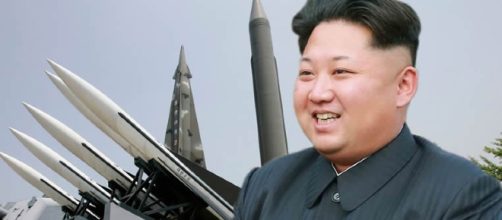NORTH KOREA'S MISSILE AND NUCLEAR HISTORY
North Korea started missile tests in the year 1993 with the latest happening in April 2017. The first missile was a Rodong missile, a single-stage liquid propellant medium-range ballistic missile, developed in the mid-1980's by North Korea as a scaled up adaptation of the Soviets SS-1 more commonly known by its NATO reporting name Scud. In 1999 it agrees to a moratorium on long-range missile tests, in 2005 it fires short-range missiles into the Sea Of Japan, in what has been interpreted as political gestures.
After failed missile tests in July of 2006 and July of 2009, in 2012 they successfully launched a three-stage rocket containing Kwangmyongsong-3 unit 2 satellite. in 2013 and 2014 they conducted missile tests and in May 2015 claimed a successful missile launch from a submarine. In February 2016 they had the successful launch of the Kwangmyongsong-4 satellite, in the same year they designed a test engine for an intercontinental ballistic #missile and also claims to launch a missile capable of striking the United States.
In February 2017 North Korea launched its first medium-range ballistic missile the Pukguksong-2 missile over the Sea of Japan. In March 2017 North Korea launches four ballistic missiles from the Tonghchan-ri launch site in the North West.
Some flew up to 620 miles before falling into the Sea of Japan. In April North Korea fired a middle-range ballistic missile from its Eastern port of Sinpo into the Sea of Japan.
On the Nuclear side, North Korea started its Nuclear tests in 2006 and over the span of a decade has done tests also in 2009, 2013 and twice in 2016.
All the tests were done underground with the first test registering a yield at 2KT (kilotons), later revised to 0.7KT by The Federal Institute for Geosciences and Natural Resources, a state-run Geology institute in Germany. The same institute in 2016 registered an initial yield of 25KT. As you can see the increase in yield is substantial.
THE TENSION BETWEEN NORTH KOREA AND THE UNITED STATES
Now since President Kim Jong-un formally came to power in April 2012, he has continued to push the agenda of defence and military strength. As the new government in the United States comes into place President Donald Trump decided to send an armada into the Korean Peninsula in response to Kim Jong-uns missile and nuclear threat. North Korea is not taking this lightly as their officials state "they would counter reckless acts of aggression with whatever methods the U.S wants to take." While also stating "We will make the U.S fully accountable for the catastrophic consequences that may be brought abut by it's high-handed and outrageous acts."
President Trump on Tuesday responded on Twitter stating, "North Korea is looking for trouble.
If China decides to help that would be great. If not, we will solve the problem without them! U.S.A " He also states "I explained to the President of China that a trade deal with the U.S will be far better for them if they solve the North Korea problem." This has the makings of a stage set for a #showdown, which I would offer would not be the best route to go, because of the collateral damage of a war between these two countries both with nuclear capabilities. The collateral damage would be of obscene amounts...
Frankly, I am not convinced that a war will be worth it, in the long run, I support the ideology of peace over war all the time. We'll be keeping a close eye on this, and time though will tell, what happens. Do keep watch for updates on this issue from us in the future.

